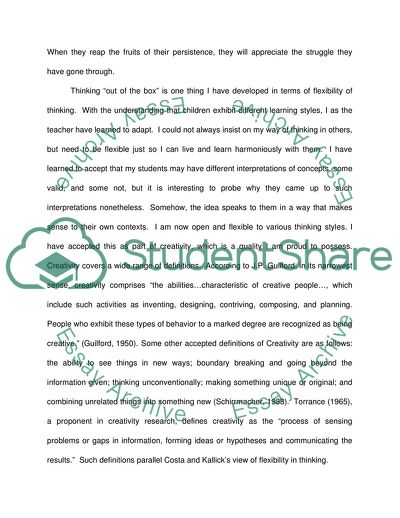How Habits of Mind Has Touched Me Essay Example | Topics and Well Written Essays - 1000 words. https://studentshare.org/education/1710202-reflection-on-habits-of-the-mind
How Habits of Mind Has Touched Me Essay Example | Topics and Well Written Essays - 1000 Words. https://studentshare.org/education/1710202-reflection-on-habits-of-the-mind.


